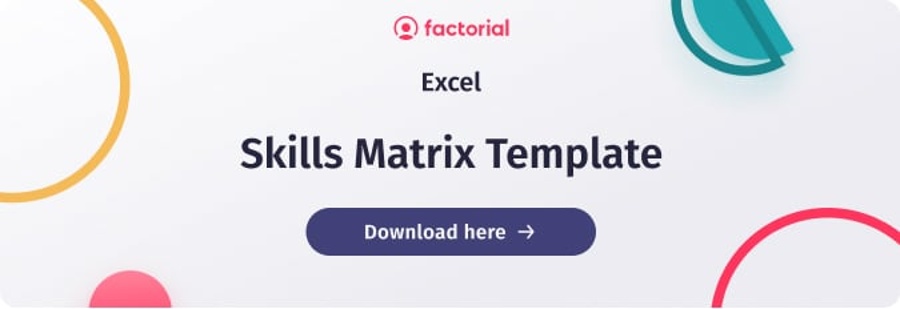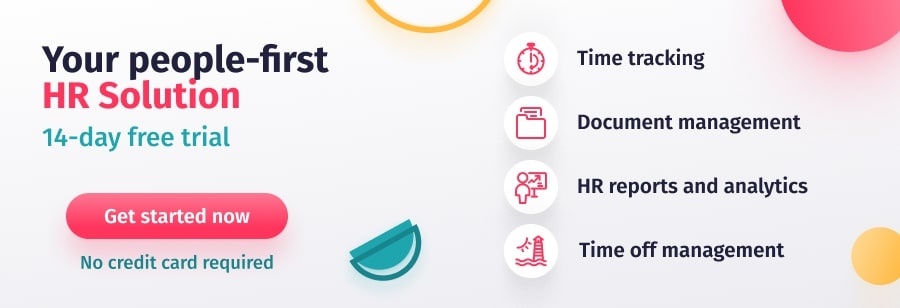A skills gap analysis is a highly effective tool for identifying any skills that might be missing from your business. It can help you spot any employees who are in need of upskilling or reskilling so that your organization can close the gap and keep up with market changes.
Even if you believe that your employees have all the skills they need to perform their jobs, it’s still important to prepare for the future, as many studies have already demonstrated that the skill gap is widening. According to a survey conducted by McKinsey, this is happening as a direct result of rapidly evolving technologies and business models. Companies need to stay ahead of the curve and implement as many measures as possible to close the gap and retrain their staff. If not, you run the risk of being left behind.
We’re going to take a look today at what a skill gap is and share a few tips so that you can learn how to close skills gap. We will at a few examples and discuss how to conduct a gap analysis to help you develop the skills of your workforce.

What is a Skill Gap?
Skill gaps, also known as ability gaps, professional development gap, and job skills gaps, is the gap between the skills, knowledge, and abilities that your workforce currently possesses, and those that it needs. This gap prevents your employees from performing as well as they could and can hold you back in terms of market positioning.
The concept of the skills gap has always existed, but it is being talked about a lot recently due to a number of factors. The main reason is that the future of work is changing. Technological advances mean that many jobs are being automated or becoming obsolete. Business models are also evolving, even more so since the start of the pandemic and the introduction of new ways of working.
This has also had an effect on the soft skills that employees need to get ahead. Skills like communication, collaboration, and discipline have become more important than ever since the shift to remote and hybrid work models.
Because of all this, businesses need to address the changing skills gap in their organizations and prepare employees to take on new roles. In fact, continuous skill-building is now viewed as being crucial for long-term growth. It is the only way to position your company for a future built around technology, innovation, and agility.
Define Skills Gap Analysis
A skills gap analysis is a tool that you can use to identify which skills gaps currently exist in your organization. It helps you establish what skills you need in order to succeed, compared to those you already have in your business.
A skill gap analysis involves three primary phases:
- Determine the skills needed for a job
- Assess existing employee skills
- Identify gaps
A skills gap analysis works in much the same way as a training needs analysis. The aim is to establish which areas of learning and development you need to focus on in order to improve the skills, knowledge, and abilities of your employees. You can then use the data you collect to establish what training requirements you have in order to fill the training gap between current and future skills.
You can design training programs for your employees, create employee development plans, or even implement initiatives for workplace mentorship or coaching in the workplace. This will help you develop a solid foundation and nurture a positive learning culture where skills gaps are continuously addressed, helping your company grow and develop in line with changing business environments.
Benefits of a Skills Gap Analysis
There are a number of benefits to implementing a regular skills gap analysis in your business:
- An effective skills gap analysis can give you invaluable insights into your workforce, helping your company grow and develop. It also helps you nurture a knowledgeable and better-equipped workforce.
- It highlights critical skills that your employees need to work on so that you can implement the right training programs to get ahead
- Identifying training gaps and investing in the right L&D programs can help you deliver on your strategy and achieve your goals as a business. It also increases employee performance and productivity levels.
- It’s becoming increasingly harder to find new hires with the right skills to close skills gaps. It’s much easier and more profitable to train people in-house. Plus, your employees will appreciate you investing in their development, increasing employee satisfaction and retention levels.
- Conducting a regular analysis of the skills in your organization can help you identify and address potential skills gaps before they become an issue.
- Even if you don’t identify any obvious gaps, a skills gap analysis can highlight growth opportunities. For example, there is always room for development when it comes to soft skills like good communication and collaboration.
Skills Gap Examples
There are countless methods that you can use to address and fill the skills gaps you identify in your skills gap analysis. The right solution for you will depend on the nature and size of your business, amongst other factors.
One factor that underlies all analyses is the focus on offering strong training support and opportunities for workers to learn the skills the business needs.
Here are a couple of examples of businesses that have done just that.
To address potential skills gaps, Google has implemented an initiative aimed to drive microlearning, known as Whisper Courses. A whisper course is a series of emails, each with a simple suggestion, or “whisper,” for a manager to try in their one-on-ones or team meetings.
Google hasn’t stopped at its own employees, though. Google has also launched a series of programs aimed at improving the skills of NGO workers. Grow with Google offers free training and tools for students, teachers, businesses, job seekers, startups, and developers.
Amazon
Amazon has also launched a number of initiatives aimed at upskilling and reskilling its employees.
The first of these is its Associate2Tech program. This is a 90-day course for IT support technician roles, in which they receive on-the-job training. Amazon also pays for their A+ Certification test.
Another successful initiative is the Amazon Technical Academy, aimed at employees wanting to transition into software engineering. This initiative is based on the concept of peer-to-peer training. It also uses project-based learning to ensure employees understand how they’ll apply the skills they learn.
Finally, Amazon has founded The Machine Learning University. This is an employee development initiative that is open to anyone with a background in tech and coding. Training consists of six-week modules during which Amazon Machine Learning scientists help employees develop their coding skills.
How to Perform a Skills Gap Analysis
The most effective way to identify potential skills gaps in your company is to undertake a skills gap analysis. This will help you compare where you are now and where you want to be. Focus on both hard and soft skills so that you’re fully prepared for growth and development.
A skills gap analysis involves three primary phases: identifying training needs; analyzing current skills; and calculating the gap between the two.
So, how do you do this?
Firstly, you need to identify the skills your organization needs based on your mission and business objectives. You then need to collect data on the existing knowledge and skills of your workforce. The best way to do this is by using a skills matrix template. A skills matrix helps you keep track of the progress and achievements of your workforce. You can design your own or download and customize Factorial’s free Skills Matrix Template.
You can then use the template to see how your employees are developing. What’s more, you can assess their level of interest in learning particular skills, and compare them with overall objectives. Then just compare this data with your “wish list” of skills, knowledge and abilities.
How to Address Skill Gaps
Once you’ve performed your skills gap analysis you can focus on creating a strategy to fill your skills gaps. This might be developing L&D programs, hiring for different skills, or considering job redesign, amongst other strategies.
The most effective strategy usually involves offering your employees training opportunities. You should consider using a variety of training methods, such as coaching, job rotation, mentoring, shadowing and role play. You should also focus on developing a learning culture where employees feel able to grow and develop.
Consider the following best practices:
- Work closely with your managers to better understand why skills gaps exist, and how you can address them.
- Make sure your solutions for addressing skills gaps align with your organization’s goals and key skills needed for the future.
- Conduct these analyses on a regular basis. This will help you keep your finger on the pulse of current and future work trends.
- Make sure you put your findings into action and use benchmarks and measurable outcomes to keep track of your progress.
- Remember: identifying skills gaps is an opportunity for growth. With the right training and support, your business and employees can thrive.

